Next-Gen Reference Tracks: 12 Top Engineers Share Their Essential Reference Mixes
As music evolves, reference tracks do too.
Everybody in music production knows that reference tracks are an essential tool for getting ears oriented within a critical listening environment. While some songs will never go out of style, new ones must constantly enter the canon to account for changing consumer tastes.
SonicScoop surveyed a sampling of audio professionals to find out what their personal next generation reference tracks are. The stipulation: the songs must be five years young—released in 2012 or later. We also asked them for their classic references, which could emanate from any era.
Producers, mixers, mastering engineers, studio designers and more, with expertise from hip-hop to classical, gave us their insights on how they get in sync with a sound system. But you’ll learn more than just what songs they go to—get invaluable detail here about exactly what they listen for to check for system accuracy, and why.
Whether you’re checking modifications to your own setup, visiting another space, or getting calibrated with a client, their selections are sure to give you fresh sources of sonic security.
Rafa Sardina
Role in the Studio: Producer/Engineer/Mixer, and Governor, Chair and Vice Chair for the GRAMMY’s LA Chapter, Producer/Engineer Wing and Latin “CPI” Wing.
Credit Highlights D’Angelo and The Vanguard, Elvis Costello and The Roots, Stevie Wonder, Placido Domingo, Dr. Dre, Michael Jackson, Lady Gaga, Clare Fischer Big Band, Luis Miguel, Harry Connick Jr., Michael Bublé, Arturo O’Farrill & Chucho Valdes with The Afrocuban Jazz Big Band Orchestra, Tim McGraw.
What He Listens For: I have built a list of many recordings that offer me ways to evaluate the integration of elements in a mix, density versus clarity in the mix: The low and high end, impact of the mix, and where the vocals sit within a track.
But especially I listen to how much emotion a mix conveys to the listener. To me, that’s the key to any mix.
I work on so many styles of music from classical to R&B, soul, pop, opera, jazz, that I keep a vast amount of tracks at my disposal. There are too many to list, but I have included a few below.
Next-Gen Reference Track #1: “Stressed Out” by 21 Pilots or “Radioactive” by Imagine Dragons show how to implement very modern production values in a mix. “Stressed Out” is simple, effective, but still very emotive approach.

Next-Gen Reference Track #2: “Get Lucky” by Daft Punk shows how a more traditional approach can be polished and made current with a very subtle update.
Next-Gen Reference Track #3: “Morning” by Beck or “Decks Dark” by Radiohead. I love the use of space [in these] and they [are] great examples on how to build a song from the sonic design standpoint.
Next-Gen Reference Track #4: “Shadow Days” by John Mayer, any track from Alison Krauss & Union Station off the Wallflower Album or “Dirty Rain” by Ryan Adams. These are very beautifully-crafted, non-pretentious, and natural-sounding mixes.
Classic Reference Tracks:
“Good Vibrations” by The Beach Boys, from Pet Sounds
Thriller by Michael Jackson
Sgt. Pepper by The Beatles
Joshua Judges Ruth by Lyle Lovett
Who Is Jill Scott by Jill Scott
Ari Raskin
Role in the Studio: Engineer, mixer and producer.
Credit Highlights: Whitney Houston, Kanye West, Ledisi, Keane, Theophilus London, Meshell Ndegeocello, Guy Sebastian ft John Mayer, OneRepublic. Upcoming releases with Trey Songz, Busta Rhymes feat Maxwell, Travi$ Scott, Justin Bieber.
What He Listens For: There’s generally three different situations when I’d use reference tracks.
1) At the start of a session, when I’m working in a room I’m not 100% used to acoustically.
Generally this would be for mixing, but certainly when tracking as well—especially for a full range and complex instrument like live drums. It’s important to know the sound and expectations of the control room you’re monitoring in. In this situation, an older, “classic” mix that I’m familiar with is the best type of reference track.
2) When I need a reference for style comparisons. Sometimes an artist will mention that they have someone else’s production in mind and they want their mix to share some sort of element from it, like a vocal effect, or a general balance of how the whole song sounds.
3) This is more for competitive reasons—making sure your mix plays as loud as something commercially released so that the client doesn’t get upset or thrown off by your mix being quieter than the last track they listened to.
This is a situation when using a modern release as a reference track is important. However, I only recommend making something as loud as possible if you are the mastering engineer and you are in the mastering phase, or when sending the mix out for comments to clients who don’t know better and need it loud in order to think it’s good, or if you know the mix won’t be getting mastered but instead going straight to soundcloud, mixtape, etc.
Next-Gen Reference Track #1: “The Hills” by The Weeknd
This mix has a lot of lows, highs…and mids! It pushes the limits of brightness and bass. For this reason, I think it’s a good record to use for checking how much of the sonic spectrum I’m covering in my own mix. (You can do this with a spectrum analyzer instead, but I think your ears and musical judgement are usually a better gauge).
Next-Gen Reference Track #2: “Thinking Out Loud” by Ed Sheeran
A solid mix that has a good amount of brightness without being harsh. By no means is this the bassiest mix, so I wouldn’t use it to compare your low end to like most engineers would utilize reference tracks for. Rather, the lead vocal on this track is mixed about as loud as anyone should ever mix a vocal over a band without it being TOO far up front. For this reason, I’ll sometimes use this record to compare vocal levels with when mixing similarly-styled non-aggressive pop songs.
Next-Gen Reference Track #3: A rough mix of a production I’ve been working on recently and have listened to over and over on multiple systems. This is useful if I’m in a control room my ears aren’t familiar with, just to acclimate my ears to the environment. NOT to gauge EQ’ing of the mix I’m doing.
Classic Reference Track: Ron Blake “Shades of Brown” because I tracked and mixed it, Greg Calbi mastered it properly, it sounds full-range, and I know it really well.
The Roots “Do You Want More”. The entire album. Bob Power mixed the hell out of this album, and I listened to it repeatedly growing up, and like much of Bob’s work on those ‘90’s hip hop records, it pushed the sonic boundaries of highs and lows, so that CD is a useful tool for me when getting acclimated to a room.
Lastly, Radiohead “Everything In It’s Right Place.” This song, and the entire Kid A record, should sound pretty much perfectly smooth, warm and balanced across the hi fi spectrum. If it doesn’t, it’s an indicator to me that the room has flaws to look out for.

Dirk Noy, Director of Applied Science and Engineering, Walters-Storyk Design Group
Role in the Studio: Acoustical consulting and systems engineering with experience in engineering, recording, mixing.
Credit Highlights: Studio design projects for Church Studios, London UK; VSL Synchron Stage, Vienna, Austria; Jungle City Studios, New York USA
Other acoustics projects include Swiss Federal Parliament Building, Bern Switzerland; Maracanâ Stadium, Rio de Janeiro Brazil; Nordstern Club, Basel Switzerland
What He Listens For: My reference tracks usually have one or more of the following three goals:
1) I use the reference tracks to get to know the system—consisting of both the room and the loudspeaker system.
To achieve this, I listen simultaneously and in no particular order for width of frequency range, frequency response evenness, phasing anomalies, stereo stage and panorama, depth of field, phantom center, transient response, crossover characteristics, coupling of loudspeaker with the room, resonances, reflections, standing waves/modal behavior, decay of sound at various frequency ranges, dynamics, distortion, and probably a whole lot of other aspects that don’t really have a technical name.
I guess I am trying to get a “feeling” for the loudspeaker and the room and the interaction of the two.
2) This is often a quite seamless transition from first to second goal. I use the reference track to analyze causes and effects in a loudspeaker/room system. I change one parameter (e.g. the crossover frequency) and listen to the same track (usually a specific excerpt) repeatedly while changing that particular parameter.
Usually, I will make a determination whether what’s the optimal setting for the particular parameter and leave it at that unless further down the line that particular parameter needs readdressing.
I need to mention that although I rely on my ears—which are always the top criteria. I also heavily rely on acoustical measurement technology in both frequency and time domains as I can learn quantitatively from the measurement results.
The listening experience and the measurements in combination generate a complete picture in my head of a many-parameter system and its optimization potential. When in a session where I am actually asked to modify the loudspeakers and/or the room, that’s the moment where I will really dig in and start playing the parameters such as crossover points, equalizer settings, gain and phase—but not before I have made sure that the system is setup in a physically correct manner. (Height, angles, mechanical mounting, airspaces, vibrations etc.).
I tend to change back and forth between measuring and listening mode quite frequently, maybe every 15 minutes over a two-hour calibration session. The goal of the calibration session is to leave the room in better sounding shape than before and that usually is precisely what is achieved.
3) The simple and pure enjoyment of a great sounding loudspeaker/room system by listening to wonderfully performed, recorded and produced music. Probably not surprisingly, this is the part that I enjoy the most.
Next-Gen Reference Track #1: “Hey Now” by London Grammar, from the 2013 album If You Wait.
Great buildup, great production, wide dynamic range, well balanced mix, great female voice, and good depth.
Next-Gen Reference Track #2: Partition by “Beyoncé”, single from the 2013 Beyoncé album, recorded at Jungle City Studios (WSDG design).
This track has massive low frequency content and prominently exhibits a downward sweep almost down to the limit of human hearing.
If I can A ) hear the bass going all the way down and B ) hear a smooth (non-bumpy) sweep, I know that the loudspeaker/room system is in very good shape concerning low frequencies, which often is the most critical domain to get it right.

Classic Reference Track: It’s got to be Michael Jackson’s “Thriller.” In smaller to medium setups, including recording studios, this is always the very first and the very last track that I use.
On larger systems in larger spaces such as performing arts centers (theaters, concert halls) I often use “Parce Mihi Domine” by The Hilliard Ensemble and Jan Garbarek. And, on special occasions, Puccini’s “La Bohème.”
Hank Shocklee
Role in the Studio: Sonic architect. Creator of Public Enemy, inventor of the Bomb Squad.
Credit Highlights: Fear of a Black Planet,
Public Enemy; The Great Adventures of Slick Rick, Slick Rick; Juice—The Soundtrack, American Gangster—The Soundtrack. Forthcoming: Honeymoon on Mars, The Pop Group; Technocracy: The Introduction to Quantum Entanglement, SHOCKLEE.
What He Listens For: What I listen for in reference tracks are:
1. Frequency response: How the frequency spectrum is covered from top to bottom.
2. Frequency spectrum: How much of the frequency spectrum is used from right to left.
3. Frequency dynamics: How the frequency spectrum is used from back to front
3. EQ = emotional quotient: How frequencies are used to determine an emotional response from the listener
4. Frequency heat ratio: How frequencies are used to reflect the color spectrum of our environment.
5. Vibrational energy: How rhythms are presented and how it communicates to the soul of the listener
Next-Gen Reference Track #1: “Gyre” [Original Mix] by Brian Sanhaji
Next-Gen Reference Track #2: “Unforeseen” [Live Version] by Terence Fixmer
Classic Reference Track: Rubber Soul [Album] by The Beatles
Christos Tsantilis
Role in the Studio: Producing, tracking, editing mixing, mastering, room tuning and acoustic design.
Credit Highlights: Currently mixing Ian Lloyd album BTB, Room tuning for Tribe Called Quest, room design and build for both Mix Engineer Duro and funky bass player Alissia Benveniste, producing and mixing a new single project titled NOSUGA- HotGirl.
What He Listens For: I listen for clarity, stereo imaging, uniformity of frequency response, accurate balance between left and right speaker, and if there are any peaks or dips in mono. There are other reasons as well such as vibe, loudness matching, colorization, and harmonic distortion to name few!
Reference tracks help to motivate me so that I have a goal in mind while I work on a project. Acclimating to a room can make or break your project. I also determine what my reference tracks will be according to the project that I am working on and whether it’s a male lead singer or female.
Let me first mention that my reference tracks change all the time, because I have learned that in order to keep up with rapid changes in styles of music one must listen to all new material released and work accordingly.
I carry with me about 100 songs. The following songs are what I’m focused on at the moment:
Next-Gen Reference Track #1: Female singer: Adele — “Hello”; or Male singer: Mark Ronson — “Uptown Funk” ft. Bruno Mars.

Next-Gen Reference Track #2: Female singer: Taylor Swift: “Shake It Off”; or Male singer Justin Bieber: “Sorry”. (Purpose: The Movement).
Next-Gen Reference Track #3: Female singer: Shakira — “Can’t Remember to Forget You” ft. Rihanna; or Male singer Wiz Khalifa — “See You Again” ft. Charlie Puth.
Classic Reference Track: Dr. Dre featuring Snoop Dogg— “Nothin’ But a G Thang”
Rob Seifert Gage, Audio Evidence Mobile
Role in the Studio: Mobile recording, tracking, mixing, mastering, production, musician, wiring and maintenance engineer.
Credit Highlights: Angels Cut “Calling You”, produced within the mobile recording van with the singers living room. The song went to #4 on the DigitalRadio Rock Charts. Archived the past seven “Reggae on the River” festivals. Past Credits include Porno For Pyros, Chuckii Booker, eels, NPK, k38, Nintendo, The Modeens, MIMUR, Orphan in the Afterlife, The SoHum Girls.
What He Listens For: I bust out a reference track into my ears when I’m looking for validation that I am in a genre specific range of tones and levels.
Of course I stretch past the genres after I am in the zone. Often times I will listen to a variety of songs that I know so well in many different ways to evaluate a PA system’s speakers and effects sends on the console.
I do tend to listen to the stuff I produced to really understand what’s happening. Sometimes I got lucky with a good-sounding record, so I listen to them—records like eels Beautiful Freak and Mike Watt’s Contemplating the Engine Room.
When I first assisted Steve “Coco” Brandon tune the rooms at Aire LA, he always listened to Steely Dan and true to that music, a lot of FOH engineers who come into mix at the Mateel Center in Redway, CA, use a Steely Dan Song, even if they are mixing reggae.
Next-Gen Reference Track #1: “400 Lux” by Lorde
This track has a consistent low end that pushes the song along. I can tell if the room is off if the D note (72hz) pops out too much than normal.
The vocal is very friendly in the upper mids, so if the system has too much 2-6khz, then her nicely-rounded vocal turns harsh fast. Plus it’s a nice love song.
I like how the reverb tails out in the break before the “And I like you” vocals come back in. This is a post-loudness wars recording so I enjoy the feel of it on my body.
Next-Gen Reference Track #2: “Ride” — Twenty One Pilots with MuteMath
This record has the punchiness and low subs that really remind me that if the drums pop, then the rest is easy.
The keyboards and dub effects are clear and great. The vocal track is consistent and the tones change throughout the song.
After devouring the record, I YouTube’d the videos of what I presume are the live recordings at the Sound Kitchen—definitely an analog vibe, and a tip of the hat to the engineers.

Classic Reference Track #1: “Picture Me Rollin” by 2Pac
Besides the Wicked Groove by the late Johnny “J” it’s all about Pac’s Vocals. Clear and in your face, but still feels lower in the mix than the instruments.
His flow is so tight with the groove and you can see him smiling throughout the song. Definitely explicit, so it’s my guilty pleasure when the hall is empty
Classic Reference Track #2: “Sad to Know Your Leaving” — Gregory Isaacs
Classic reggae sound. Crisp hi-hat and kick and snare, balanced with the bass using an octave pedal. Percussion is big and blends into the rhythm.
Gregory’s voice has minimal effects but is right behind his dry track in the center. On a great system you can feel yourself behind the drum kit or playing the skank on the keys!
One more mention is the entire Meshell Ndegeocello record Comfort Woman mixed by Bob Powers in 2003. Solid lows and highs with emotion and depth.
Fab Dupont
Role in the Studio: Producer and mixer.
Credit Highlights: Shakira, David Crosby, JLo. Currently working with Doc Gyneco, Eliades Ochoa from Buena Vista Social Club, Shady Brothers, Andre 3000.
What He Listens For: Punch without too much compression, power without too much limiting and a fat bottom without bleed or masking the rest of the track.
When producing records quickly, it’s useful for me to reference something that I know is fat and clean and has not been abused. It helps make sure that I do not overdo it even when monitoring levels go loud in the heat of the moment. It’s a great reality check.
For mixing, refs are good to make sure you’re not tripping on your own stuff and keeping it real. When the artist does not provide any refs, I use my own. Often not in the style of the track so I can bring different inspirations to everyone’s record.
Next-Gen Reference Track #1: “Hands to Myself” by Selena Gomez
It has everything mentioned above. The bottom is perfect, the vocal is present without eating the rest of the track. It never loses energy even when the bottom drops out. And the production is great. Song is great too. A perfect pop music track.

Next-Gen Reference Track #2: “Johnny” by Yemi Alade
Just because the groove is oh so nasty, it’s unique, and it resets everybody’s mood to ‘sunshine’ in any session . The video is particularly badass.
Classic Reference Track: “This Is” by Grace Jones
Perfection on too many levels to mention.
Rachel Alina
Role in the Studio: Mixing engineer.
Credit Highlights: Stephen Marley, P!nk, Gabriel Garzon-Montano, Blaise Moore, Mavis Staples, Dawn of Midi, Quincy Vidal, Mono. Currently mixing Alborosie, The Gloomies, Locals Only, Blaise Moore
What She Listens For: I listen to references for both technical and creative purposes.
I like to have a track with extended low end to check the sub situation; a track for vocal sibilances and how they translate; a track for tape hiss; a track for stereo imaging; a track that was mixed in the box. Whether I’m doing an old school tape mix or a modern pop track, I like having all this information to be comfortable to work.
I also listen to my favorite albums to hear how the room feels. If something about the speakers, acoustics, and/or combination of the two doesn’t feel right for me – it’s just not possible to get a good mix.
Next Generation Reference #1: “Pilot Jones” by Frank Ocean
I reference this track to hear how far the low end extends in a room, and how the low end is responding (or not) in general. It’s also good for stereo imaging and vocal EQ curves. On a practical note: It’s also helpful to rattle packing peanuts out of new speaker ports.

Next Generation Reference #2: Daptone Records. (Anything.)
Daptone Records are consistent from performance to master and translate well to different systems. I also have a heavy tape background, so I always want a “tape check” on new systems: How am I hearing the tape saturation, harmonics, mastering EQ curves (which for Daptone are usually Golden Mastering), etc…?
Next Generation Reference #3: Serban Ghenea mixes. (Again: Anything.)
Similarly, Serban Ghenea’s [Justin Timberlake, Katy Perry, DNCE, Pitbull] mixes are consistent in quality and translate well to different systems. This also is just a personal reference: Serban and I were in a similar Philly scene circa 2000/2003-ish. There’s a vibe in his mixes reminiscent of the engineer who taught me how to mix, Shelly Yakus, that I always want to check in on.

Classic Reference Track #1: “Voodoo” by D’Angelo
This is just one of my all time favorite albums, so I know it really well. Even when a room isn’t perfect, if Voodoo comes up feeling right I can usually make it work.
Classic Reference Track #2: “Come Together” by The Beatles
Again, off one of my favorite albums so I know it well. Obviously a good tape check. Also — with the bass mixed left of center, it helps check for frequency separation between the speakers.
Troy Germano
Role in the Studio: Founder of Germano Studios, NYC; Founder of Studio Design Group
Credit Highlights: Clients that have recently recorded and/or mixed at Germano Studios include Desiigner, Sheryl Crow, Big Sean, Lorde, Ryuichi Sakamoto, Frank Ocean, Diana Krall, Nicki Minaj, Elle King, Chance The Rapper, J.Cole, Beauty And The Beast soundtrack, and the Hello, Dolly! Broadway cast album.
What He Listens For: I listen to full-range recordings that allow me to properly balance our monitoring systems for an accurate reference. And above all the track’s energy must be impactful!
I own the studios and I am a studio designer, therefore monitoring is of paramount importance to me and the studios.
Here are 3 tracks that I believe are recorded well and also mixed perfectly for my personal tastes. They are all quite different from each other and cover different time periods of recording and sound.
Next-Gen Reference Track: The current track is “Cheap Thrills” by Sia from “This Is Acting”, released in 2016.

Classic Reference Track #1: “Warning Sign” by Coldplay from A Rush Of Blood To The Head is the track I utilize when critically listening to all monitors. This was released in 2002.
Classic Reference Track #2: Another classic reference track is “Sledgehammer” by Peter Gabriel from So, released in 1986.
Kiara Mudd
Role in the Studio: Recording/mixing engineer and composer
Credit Highlights: Bro4, Jessenia Vice, Ian Lloyd, John Ford, M1, Troy Ave, Grafh, Raekwon
What She Listens For: A reference track is important to me because it puts things in my mix in perspective.
I ask myself questions depending on the style of the record; Does this have the amount of space I’m looking for? Is the low end powerful enough? Is the vocal too buried in the mix or should I bring them more upfront?
During mixing, I would utilize them more towards the end when I’m close to finishing up a mix. I do listen to a few tracks similar to a track I’m working on before I mix a song but not for long because I don’t want to limit myself to thinking it should sound exactly like the song or songs I’m using for reference.
Next-Gen Reference Track #1: “Royals” by Lorde
This song I look to when I have a very minimalist mix, that depends on the vocals to carry the song. This track is valuable because in the chorus you would think the instruments would ramp up, but they stay buried compared to how upfront the vocal is, which is different from the way I mixed those types of records.
Next-Gen Reference Track #2: “Can’t Hold Us” by Macklemore and Ryan Lewis
This song I look to when I’m trying to achieve a wideness to my percussion instruments. When I heard the width of them when they first came in I was like, “Wow,” and that was on a car stereo. It was even more eye opening on a proper system.

Next-Gen Reference Track #3: “Radioactive” by Imagine Dragons
I reference this song when I’m going for more of a grime texture to a record. This song overall handles the grittiness without being too harsh very well.
Classic Reference Track: “Voyager” by Daft Punk
I referenced many Daft Punk songs over time, but this particular song spoke to me when I was getting a handle on putting acoustic and synth based instruments in the same space. When the bass line and guitar lick comes in it blends seamlessly with the synth pad and drums.
Alex Sterling
Role in the Studio: Recording, Mixing, and Mastering Engineer, Music Producer
Credit Highlights: Thomas rhe Tank Engine rock opera Steam Rattle & Roll, 5.1 surround mixing and mastering for David Chesky’s The Mice War feature animated film; mixing and mastering for remix projects with Sia, Delaney Jane, The National, and SOAK; Sax and Vocal recording for Grace Kelly’s Downbeat’s #2 Jazz Album of the Year Trying to Figure It Out.
A lot of recent production and engineering with NYC artists CHNNLL, Krychek, SIGNAL, Tsilala Brock, Ugonna Osuala, RighteousGIRLS, and more.
What He Listens For: Reference tracks are useful for orienting your ears for the day or even a few minutes. I find it helpful to use a fixed reference point to help me even out the differences in my hearing that are present day to day and over the course of the day’s work.
In the morning I am most acute and I can hear lots of detail and subtly, but over the course of a day’s work my acuity diminishes and my high frequency sensitivity is also slightly dulled. Because of this effect, I sometimes like to “check back in” with a recording that I know feels good when I’m fresh and can help me stay sonically on track when I have a long day of production or mixing.
What I am looking for in a reference track is really several different things and not all tracks offer all of them for all styles of music either. Here are some things I listen for:
1) Vocal presence, volume, and sibilance. For Pop, Hip-Hop, and Vocal Jazz projects, I feel that vocal clarity and presence is particularly important so I like to see where the vocal in my current project might sit relative to an appropriate stylistic reference.
2) Midrange density and ambience clarity. I am always striving to get more clarity and element separation in my work. This often involves cleaning out midrange clutter and resonances as well as trying to separate instruments into discrete elements that have some space around them and are more 3D in the sound stage. There are many great examples of open and clear productions and mixes that set a high bar for clarity and space that you can refer to when working on your own mix.
3) The infamous “low end”. Even in a well-designed and acoustically treated studio you still need to make a personal creative and technical decision about the correct low frequency energy and impact in your project. Different styles of music have different levels of bass energy and need an appropriate approach to sculpting the low-frequency elements and character. I am naturally bass greedy and can’t seem to get enough of it so I try to give myself a reality check by listening to a bass reference that is extremely tight and defined but not too thin for the style.
Next-Gen Reference Track #1:
For vocal presence, volume, and sibilance in pop:
Male vocal: “Retrograde” by James Blake
Female Vocal: “The Worst” by Jhené Aiko.

For midrange density, ambience clarity, and overall openness:
“Skyfall” James Bond Theme by Adele
“The Less I know The Better” by Tame Impala
For rock density and aggression with clarity:
“Everybody Talks” by Neon Trees.
For low frequency tightness and precision in Hip Hop:
“One Dance” by Drake
“Obedear” by Purity Ring
Classic Reference Track:
For classic vocal presence, volume, and sibilance:
“The Girl From Ipanema” by Astrud Gilberto, João Gilberto and Stan Getz. This track is also really good for overall ambience and depth in Jazz with a more classic aesthetic.
For rap vocal presence and tone in a denser arrangement:
“Break You Off” by The Roots

For classic midrange density, ambience clarity, and overall openness:
“Cherry Blossom Girl” by Air
Jamiroquai’s music in general, there is just so much stuff fit together so well without any mud or clutter.
For classic low frequency tightness and precision:
“You & Music” by Donald Byrd from the LP Places and Spaces. The drum sound is incredible for dry punch and clarity. In general this record sounds amazing.
“Smack My Bitch Up” by The Prodigy
Tatsuya Sato
Role in the Studio: Mastering engineer.
Credit Highlights: Aleks Syntek, Allen Stone, Danny Brown, A$AP Mob, A Tribe Called Quest, Joey Bada$$
What He Listen For: What I am trying to learn and understand in an unfamiliar listening environment is the room acoustics and the equipment—mainly the speakers.
It is very helpful to play a track with sound characteristics that I am already quite familiar with. Hearing how these characteristics reproduce in any given room through a system reveals critical acoustic properties such as the frequency response and dynamics of the space and the equipment.
Next-Gen Reference Track #1: “Loose” by Allen Stone
I mastered this track myself, and really like the way the master came out, not to mention the mix’s having been a great one to begin with—the master is fairly loud, yet it remains clean, warm, and punchy with full frequency range extending in both, high and low, directions.
I am very familiar with the dynamic and frequency properties of the master, therefore, it becomes a very useful tool to reveal the tendencies of the listening space and the speakers, just by hearing to how this master reproduces. If I were to master a new song in an unfamiliar listening environment, “Loose” will serve as a great reference to see where my new master really stands, without being confused by the “artifacts” and “illusions” the room may create.

Classic Reference Track
“In Da Club” by 50 Cent
“I’m Yours” by Jason Mraz
“Voodoo” by Allen Stone
“The Bed I Made” by Allen Stone
— David Weiss
For more great insights into both mixing and mastering, try our full-length courses with SonicScoop editor Justin Colletti, Mixing Breakthroughs and Mastering Demystified.


Please note: When you buy products through links on this page, we may earn an affiliate commission.







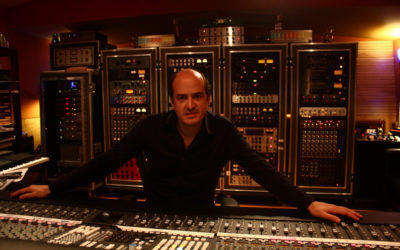
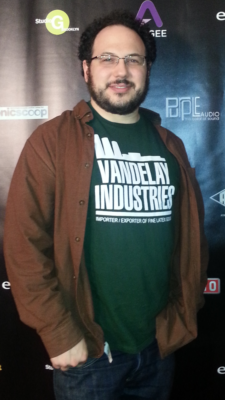
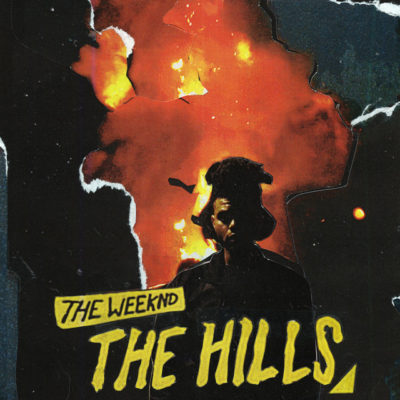


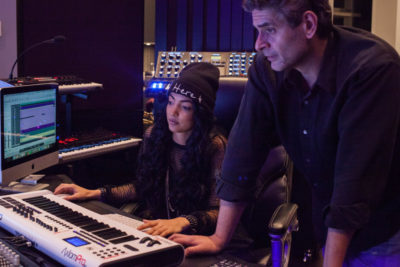
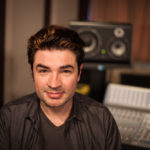

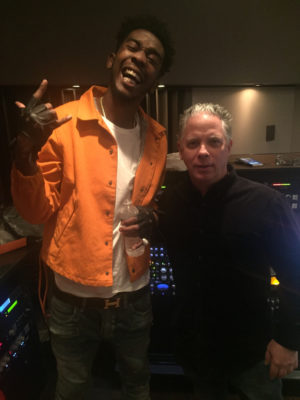
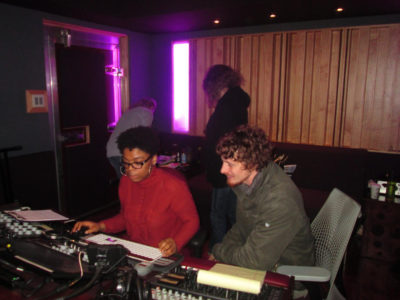
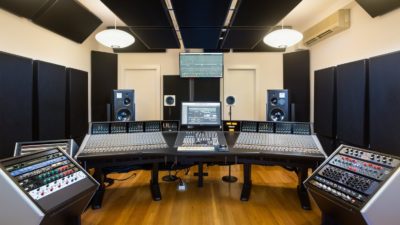

Fliz Kayce
May 5, 2017 at 2:04 pm (8 years ago)I’m in shock that someone would use “Shake It Off” as a reference track.
Side by side with “Thriller”, it sounds laughably flat.
For reference quality production in the last 5 years, Jamie XX’s “In Colour” is fantastic and so is The xx’s “I See You”.
“Vehl” by Kidnap Kid is right on the edge of “Next-Gen” but it’s fantastic. On a good system, it should really fill the room.
Michael Murray
May 14, 2017 at 12:39 am (8 years ago)There is no “Wallflower” album by Alison Krauss & Union Station as far as I can find?